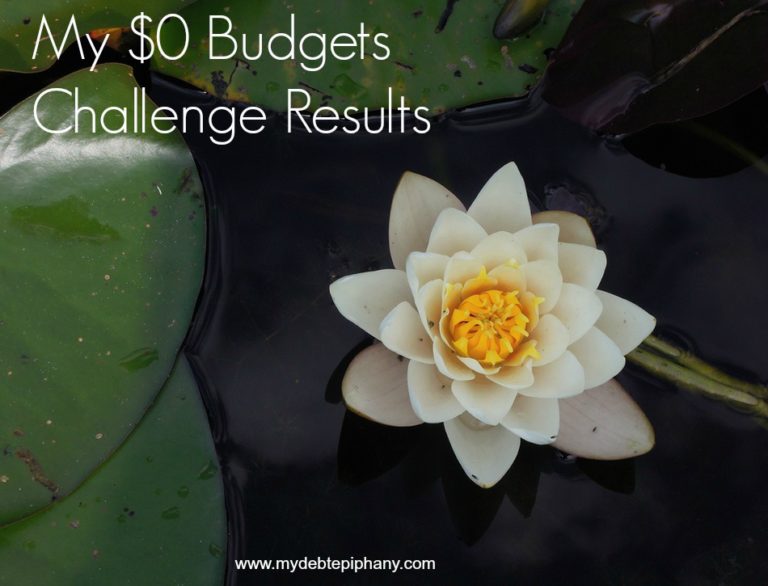Why and How to Create an Annual Budget
Do you ever get budget fatigue? Maybe you understand the importance of budgeting and have your own spending plan, but sometimes it can seem a little tedious or uneventful to keep up with it.
Trust me, you’re not alone. Your budget is not meant to stay stagnant. It should change and adapt to your changing needs and lifestyle. One thing I like to do often when I want to gain a better perspective of my spending plan is to zoom out and create an annual budget.
Related: The Ultimate Guide to Budgeting
Why Having an Annual Budget is Important
An annual budget is just like it sounds – a 12-month projection of your expenses. Budgeting month-by-month is great, but it’s also nice to see a year-round picture of how much you’re spending, what your plans are and how they’ll directly impact your goals.
Plus, it’s so easy to get married to your monthly expenses and not double-check to see how you can adjust some of the numbers. For example, my husband and I pay $90 per month for auto insurance. This isn’t bad, but on our annual budget this comes out to $1,080 per year. It’s helpful to see how monthly costs add up.
You may felt like money was tight or there was hardly enough to save or invest during the year. Having an annual budget can help you pinpoint exactly where your money went.
Plus, having an annual budget is great for periodic expenses that may come up every year or twice a year. An annual budget can help you take expenses into account like taxes, annual car registration fees, holiday spending, vacations, insurance premiums and more.
Since we bought our house 2.5 years ago, our annual budget has helped us better gauge how much we’re spending on projects and maintenance. I’m always going to be a fan of monthly budgeting, but you may have realized by now that your numbers are not going to be perfectly balanced each month. It’s best to also compare your annual expenses to your annual income to get the full picture of your financial situation.
Related: How to Come Up With a Bare Bones Budget
How to Create an Annual Budget
So how do you actually create an annual budget? The best way to get started is to review your spending over the past 12 months. Since it’s later in the year, it should be easy to go over your 2020 spending numbers and estimate what you’ll spend over the next 2 months. Still, you can use numbers from previous years and even compare your spending year-to-year.
You can check your bank statements or use an app like Mint to pull up all your transactions and spending categories. It’s best to break up your spending by fixed (rent/mortgage, bills, debt payments, subscriptions) and variable expenses (groceries, gas, transportation, entertainment, personal care).
Once you know what you’re spending monthly, just multiply it by 12 to get the annual number. Be sure to add in periodic expenses too for categories that you may not be using monthly. Here’s a breakdown of some of my annual budget numbers based on monthly expenses
Housing/Mortgage – $18,264/$1,522
Utilities – $2,040/$170
Groceries – $4,200/$350
Dining Out and Entertainment – $1,200/$100
Fuel – $2,400/$200
Car Maintenance and Repairs – $1,200/$100
Insurance (Health, auto and life) – $5,340/$445
Shopping/Household/Clothes – $1,200/$100
Personal care – $900/$75
Other fees and Misc. – $1,800/$150
Total the Numbers Up and Determine Your Budget Percentages
Based on my annual expenses for our main budget categories, it’s clear that we’re spending around $40,000+ annually just to live comfortably. Half of that is going toward housing.
One thing you’ll want to do when you have your annual budget numbers recorded is compare it to your income. While our housing cost is 50% of our annual spending, it’s not 50% of our income. This is because we live on much less than we earn.
A general rule of thumb is to keep your housing costs below 30% of your take-home pay. This is not a hard rule but I do like to follow it because I don’t want to become house poor. While I wish our housing costs were a little lower, they’re right around 20% of our income so I’m okay with that.
Related: 70 Ways to Save More Money While Living Paycheck to Paycheck
How We’re Avoiding Becoming House Poor
My Monthly Single Mom Budget – Living and Paying Off Debt on $32,000/year
The key is to live on less than you learn. That way, there’s money left for debt payments, savings, or whatever else you want to do. The best way to ensure this is to make sure you’re spending only a percentage of your income in every area. Those percentages should not exceed your income when added up together. While you’ll come up with your own percentages based on your numbers, here are some recommended budget percentages per category to consider.
Housing: 25 – 35 percent
Utilities: 5 – 10 percent
Food: 10 – 15 percent
Transportation: 10 – 15 percent
Health: 5 – 10 percent
Insurance: 10 – 25 percent
Personal: 10 – 15 percent
Recreation: 5 – 10 percent
Saving: 10 – 15 percent
***To calculate your budget percentages, divide the total annual amount by your total annual income.
Example: $1,200 in annual transportation costs divided by $50,000 annual income —> 1200/50,000 = 0.024 = 2.4%
Questions to Answer When Calculate Your Annual Budget
When you create an annual budget and calculate your budget category percentages, it can be a huge eye-opener. Here are some key questions to ask yourself during the process.
Am I spending too much on _____? How does this affect my goals?
Maybe when you run the numbers, you find out that you’re spending an overwhelming percentage of your income on takeout or online shopping. This is the perfect opportunity to put it into perspective and address how it impacts your goals. Say you’re spending $150 each month on your Amazon credit card. That’s $1,800 per year or 4.5% of your $40,000 annual income.
Determine if and how that 4.5% of your income could be better used to help you meet an important financial goal.
How much can I truly afford to save?
Once you create an annual budget, you’ll see that the numbers don’t lie. Either you’re spending less than you earn and need to find out what’s happening to the rest of your money. Or, your spending category percentages match your income and you’ll need to see where you can adjust your spending.
Related: How to Save Your First $1,000 This Year
Why Do You Need a Full Emergency Fund?
What Are My Most Important Periodic Expenses?
You may start to see your periodic expenses add up once you start reviewing your spending categories. You may have costs to cover for everything like insurance to your anniversary trip or a special Mother’s Day gift. It can seem overwhelming when you look at all your periodic expenses but this is the perfect time to break them down into chunks so you can set money aside monthly or quarterly.
One thing I like to do to manage planned periodic expenses is to assign most of them to a sinking fund.
Related: How I’m Rebuilding ALL My Sinking Funds
Summary
So in summary, an annual budget is great for you if:
- You often feel like you work hard and earn a decent amount of money, but have no idea where it’s going
- It’s difficult for you to track and categorize expenses
- You need a better way to pinpoint major financial issues
- It’s helpful to spend time thinking about spending that will occur even beyond the course of the year (You can budget for a car or an anniversary or any other important events/purchases more effectively in the long run)
Have you had a chance to create an annual budget yet?
Stop Worrying About Money and Regain Control

Join 5,000+ others to get access to free printables to help you manage your monthly bills, reduce expenses, pay off debt, and more. Receive just two emails per month with exclusive content to help you on your journey.







